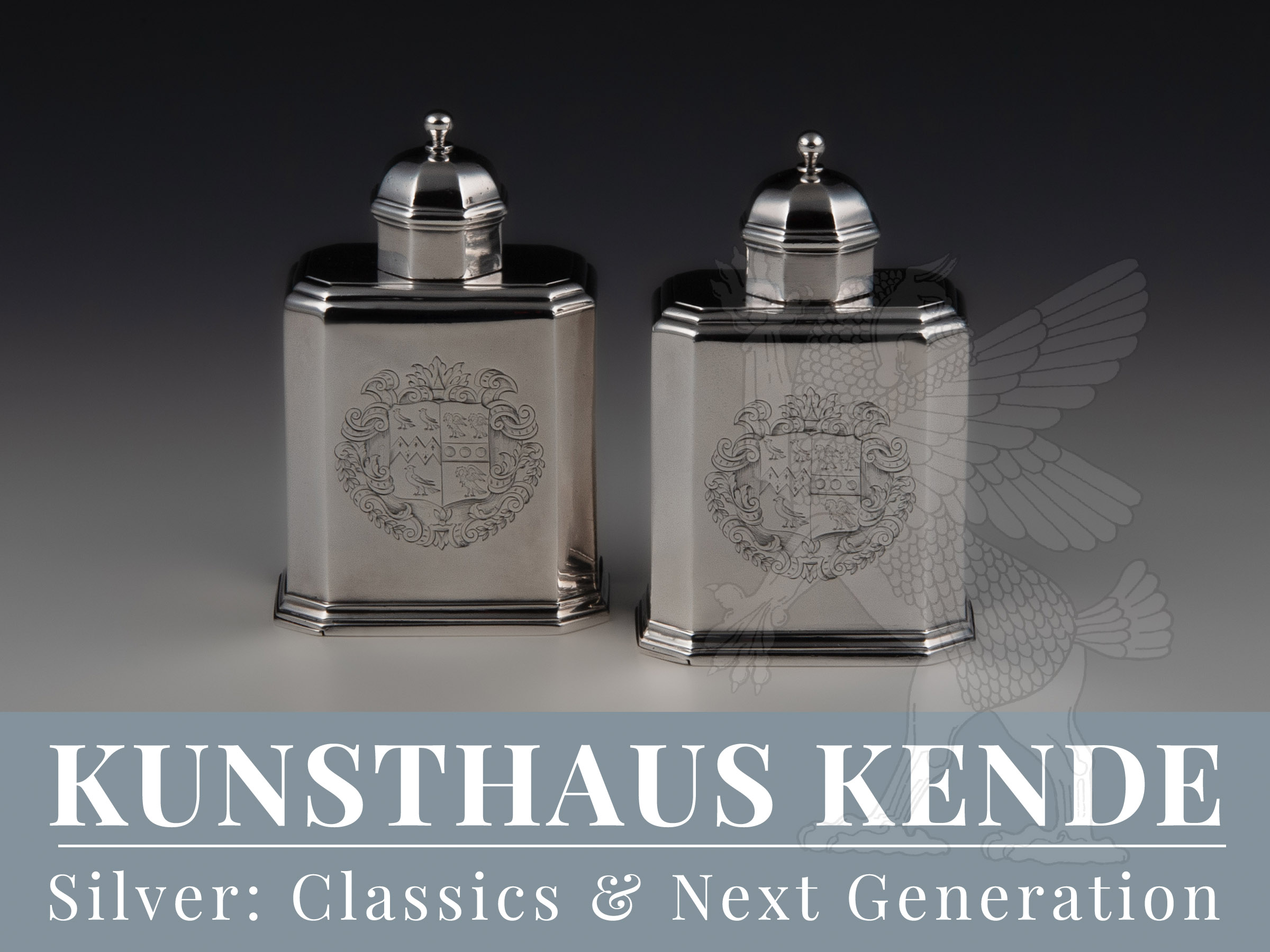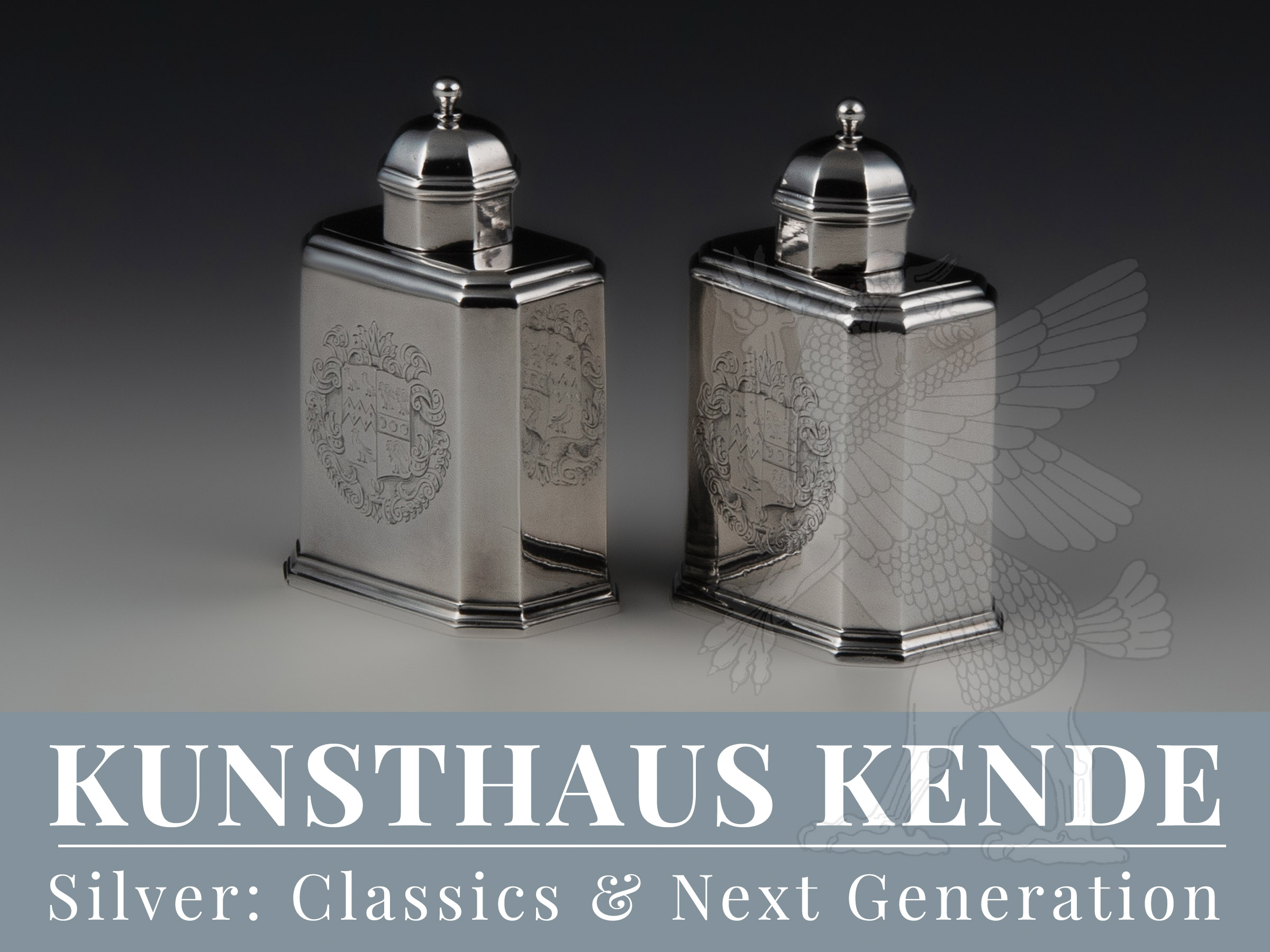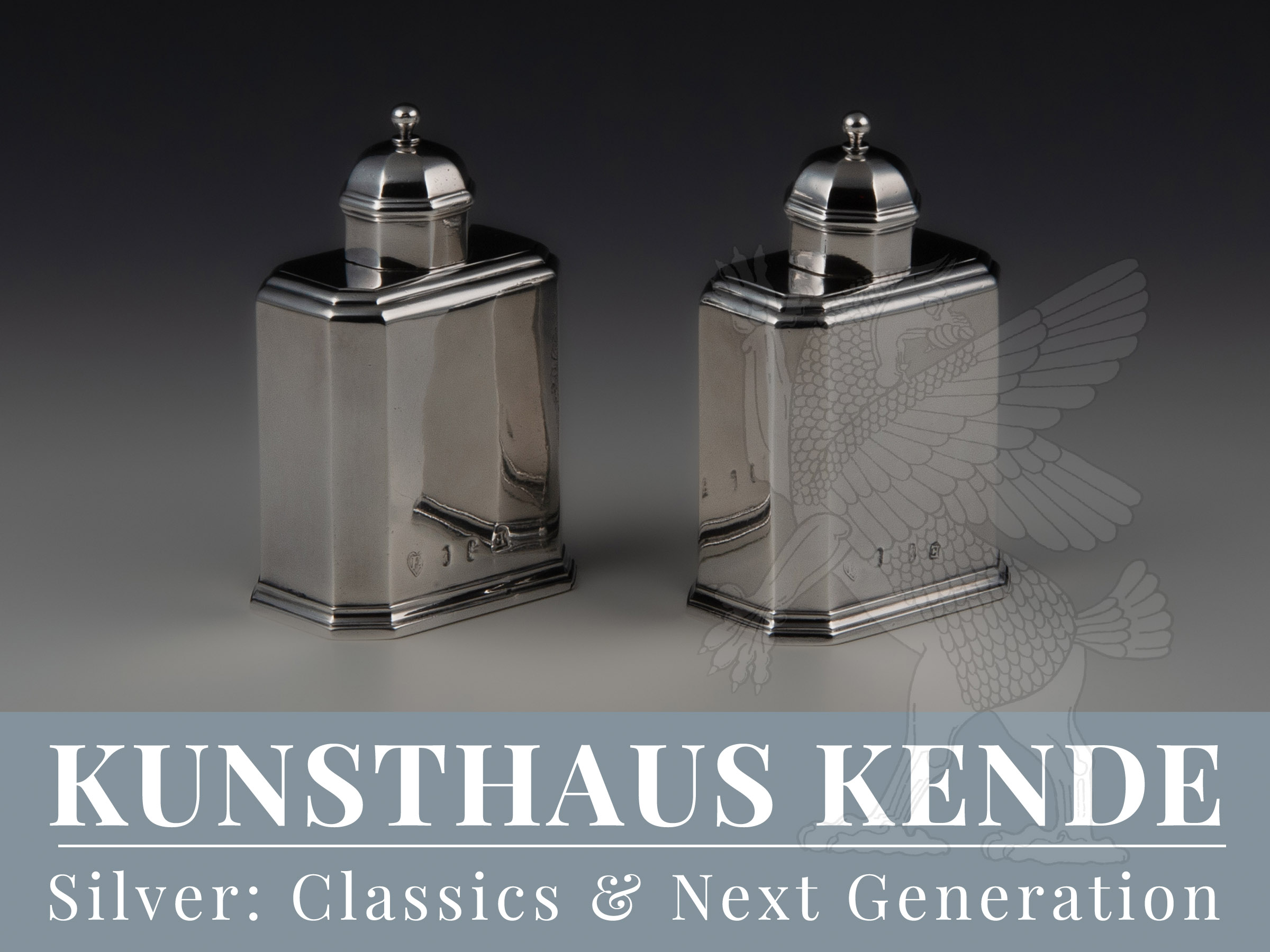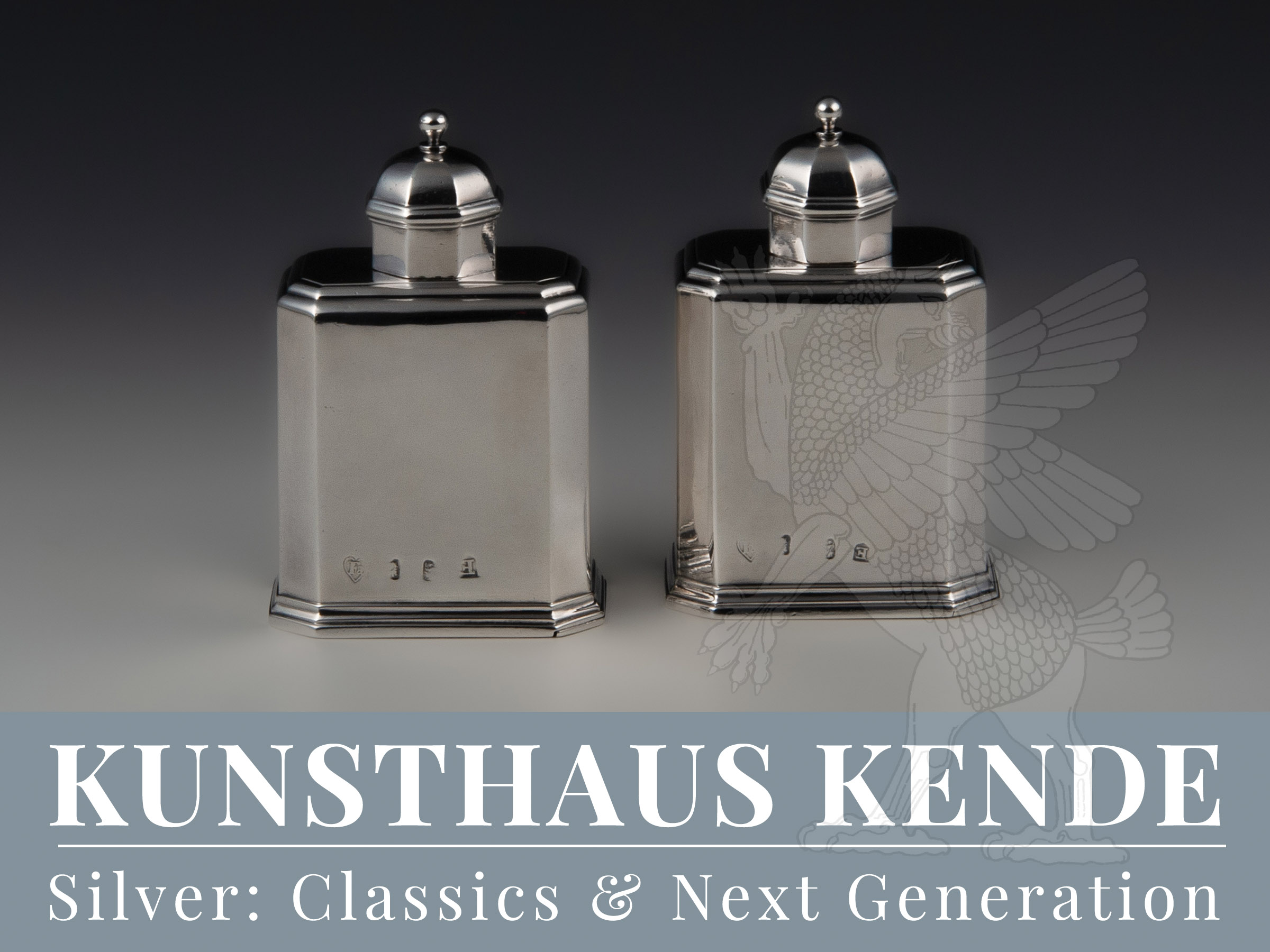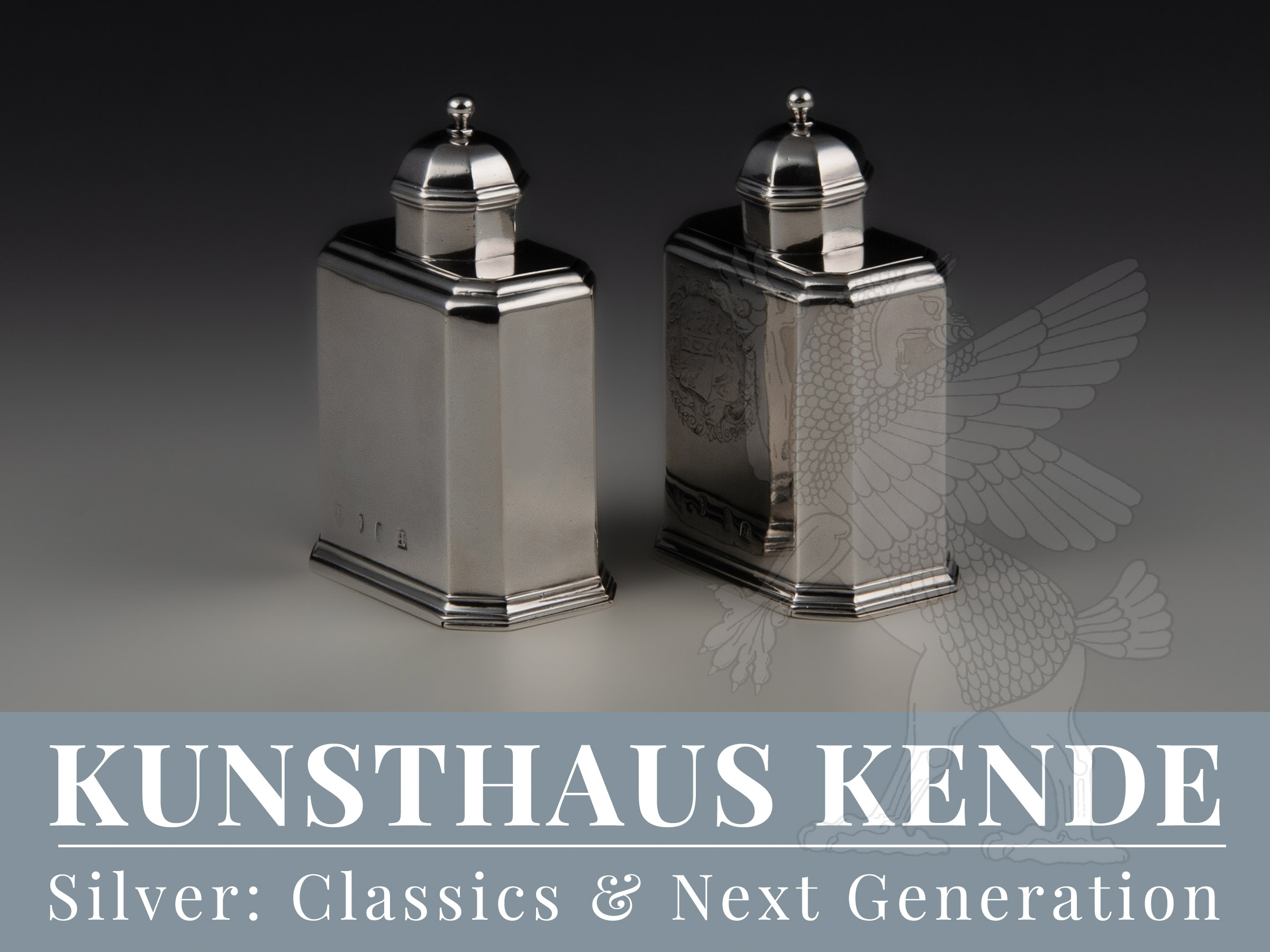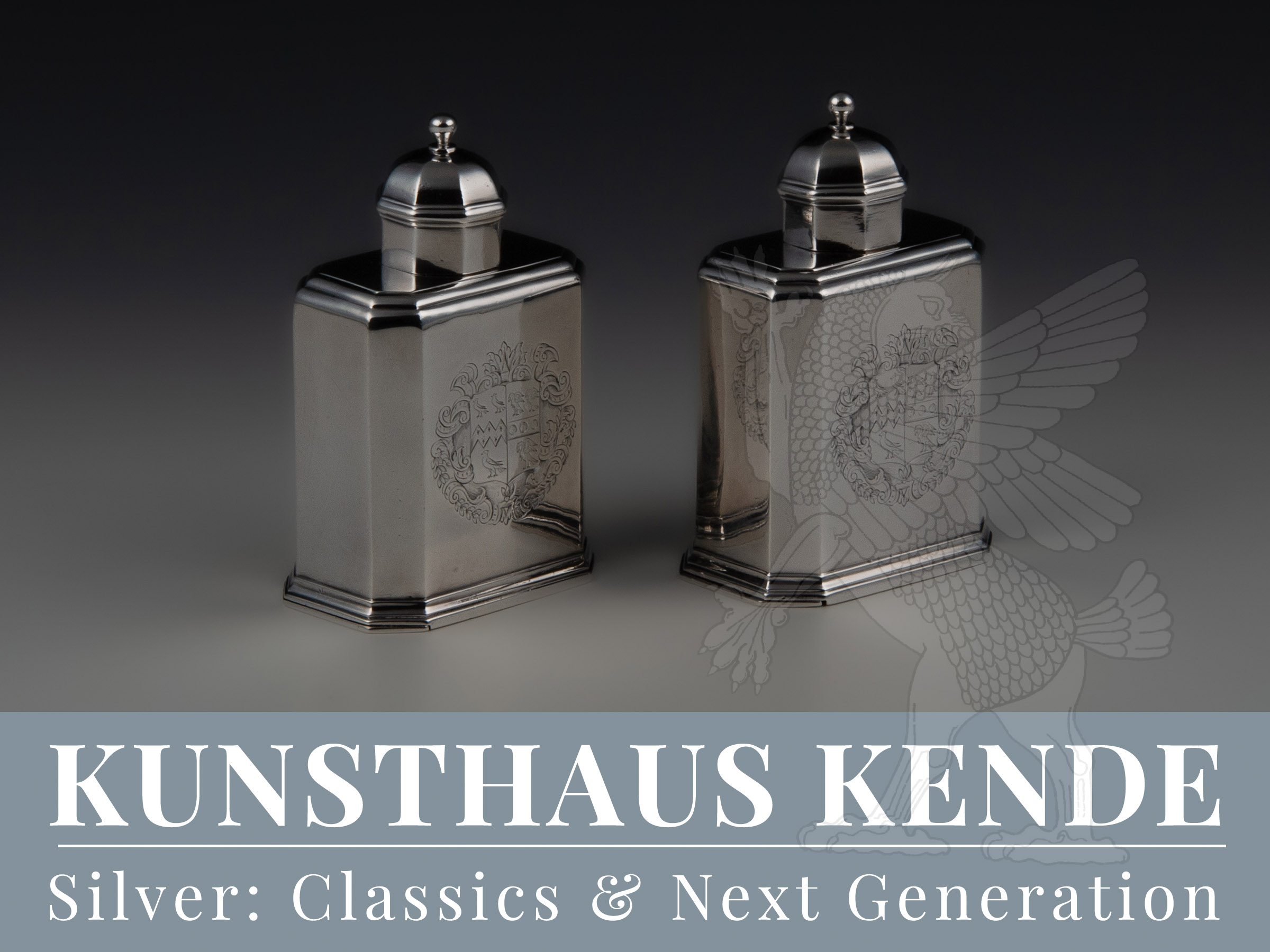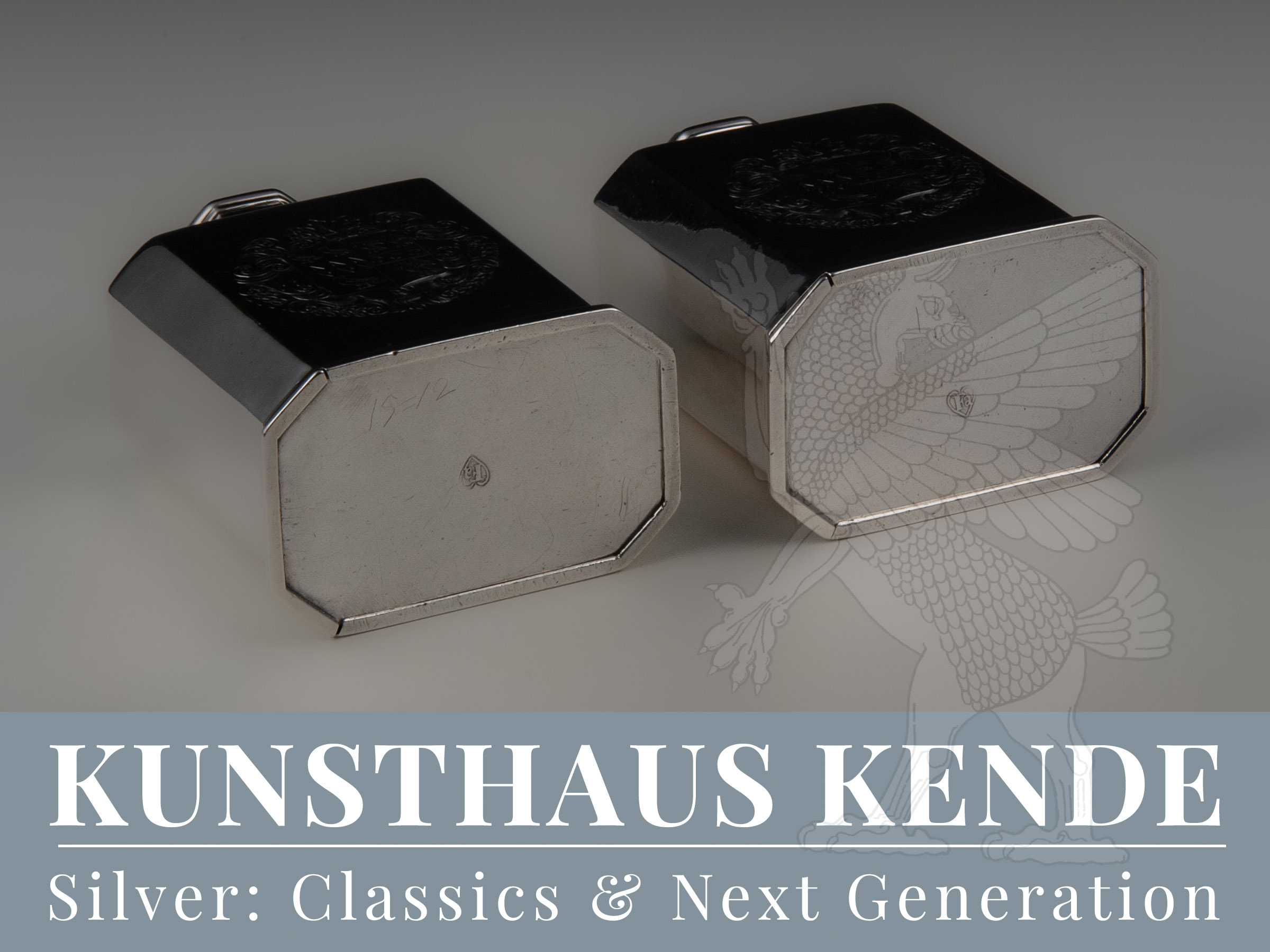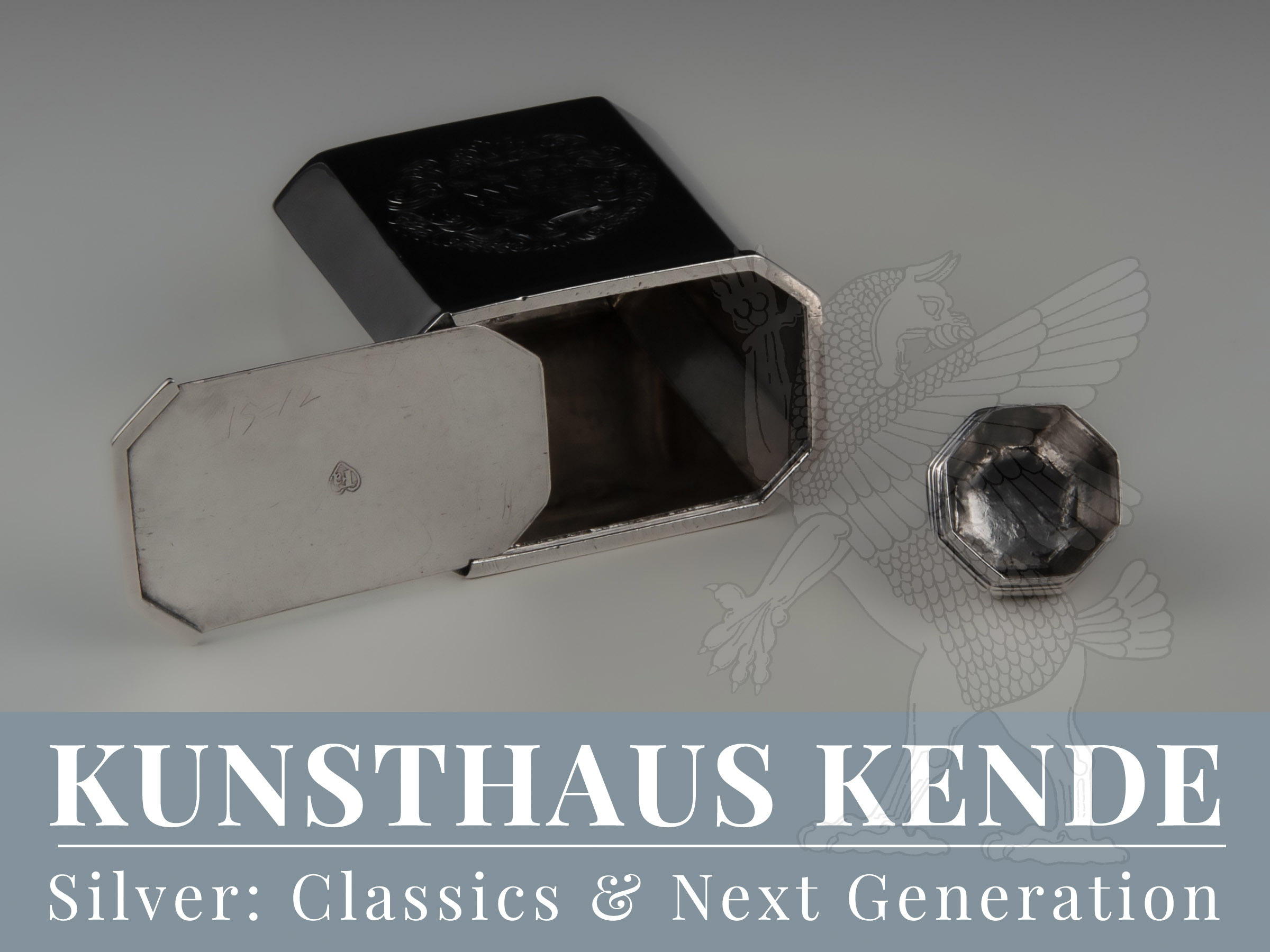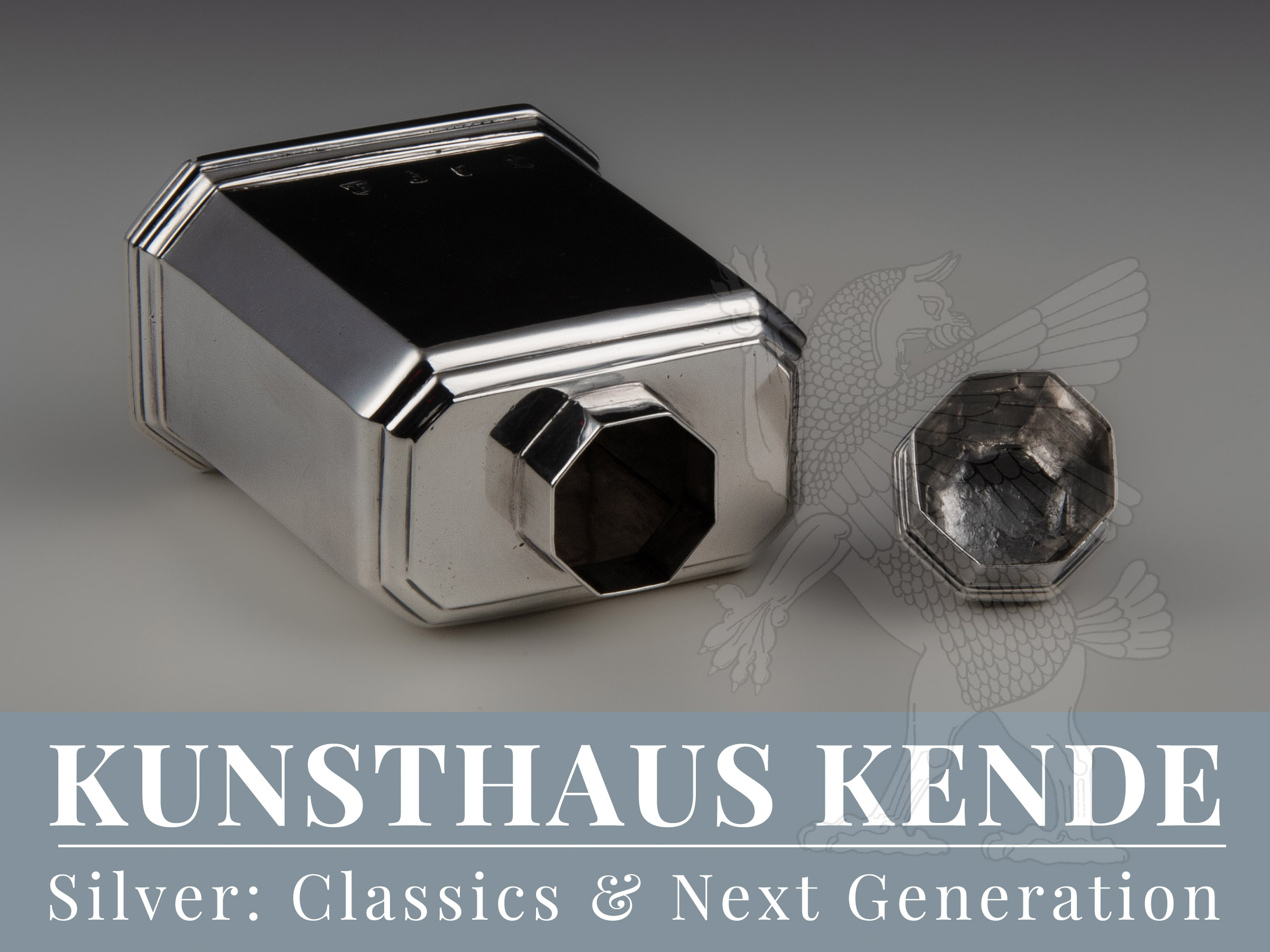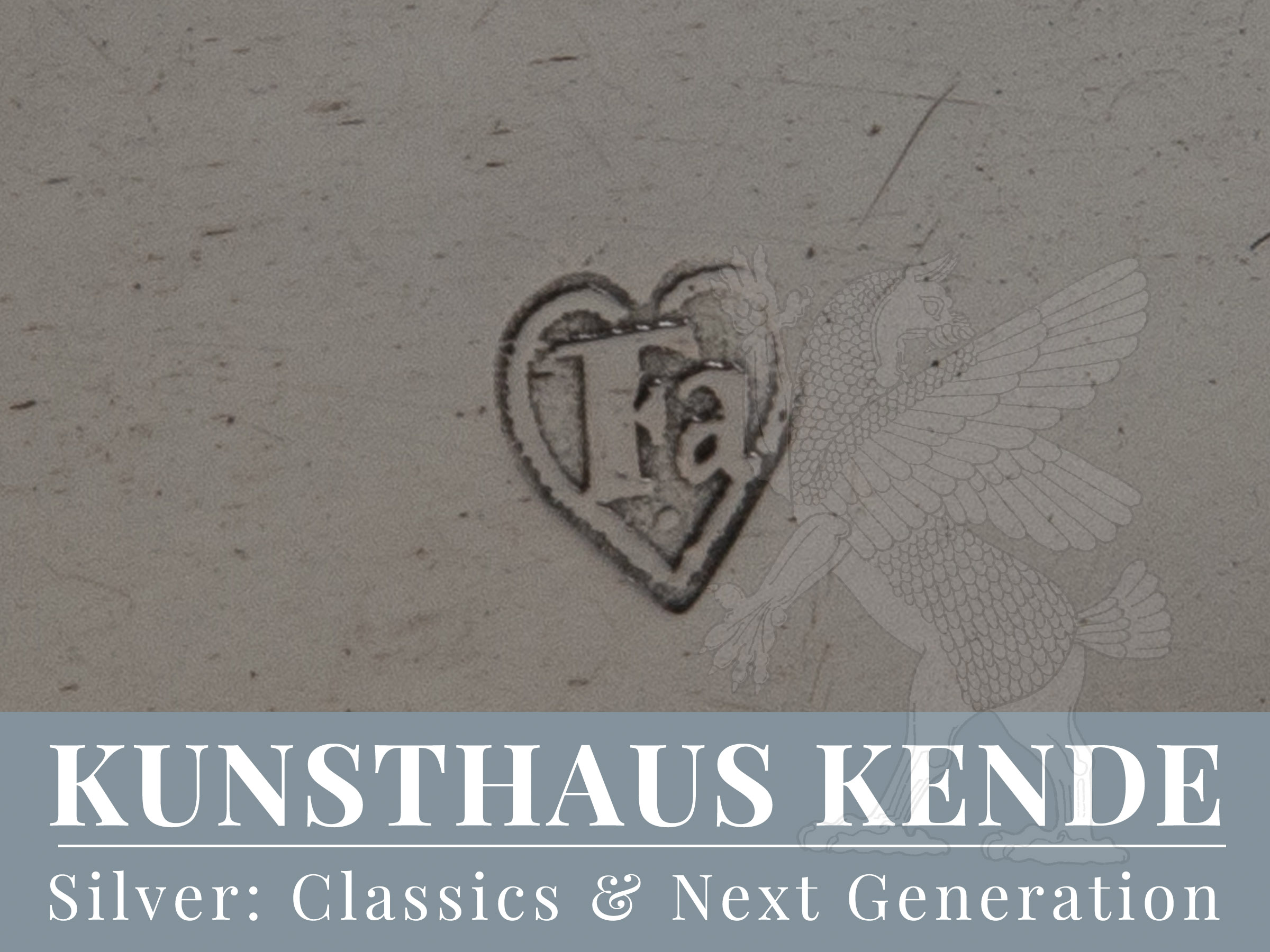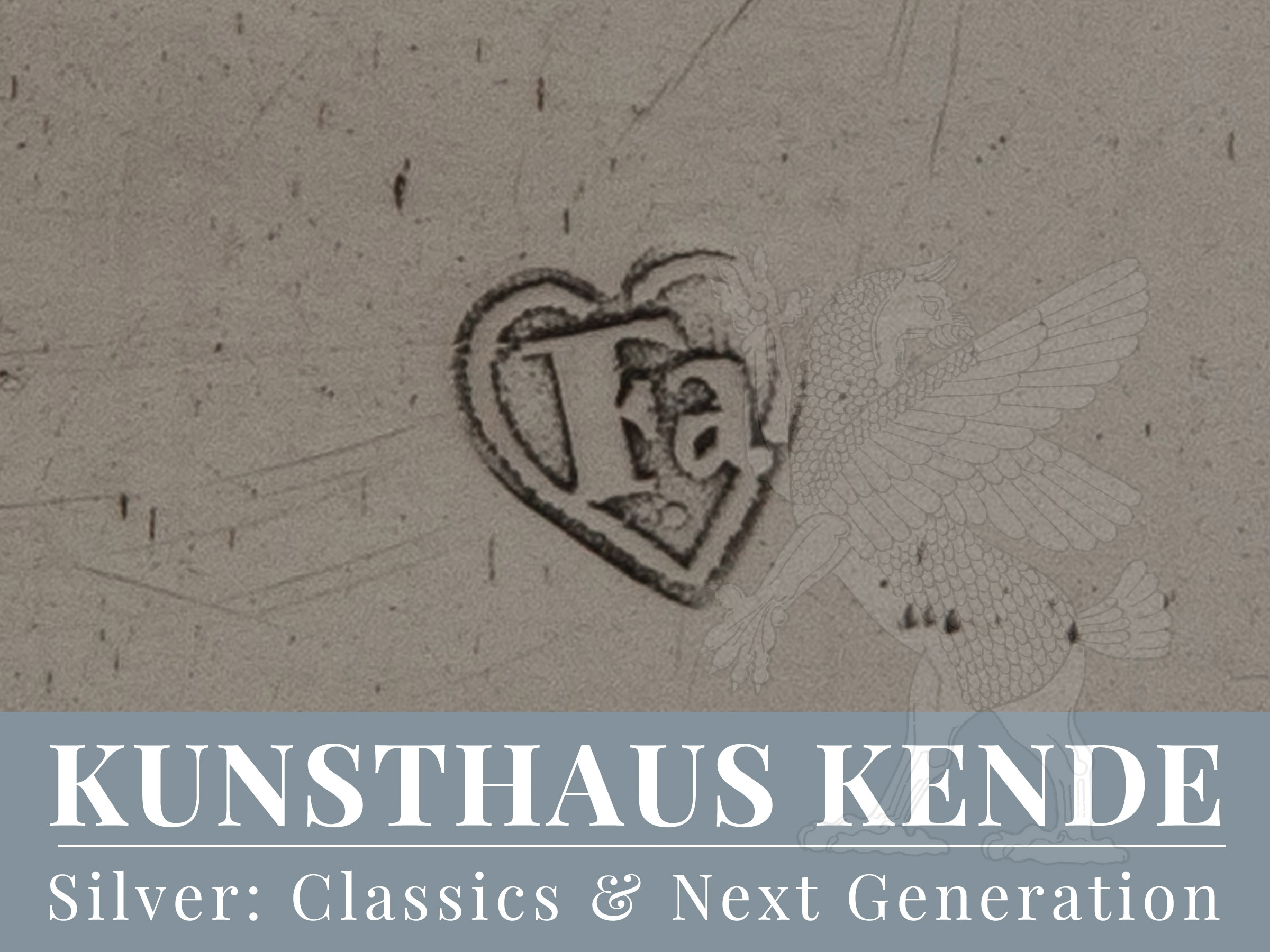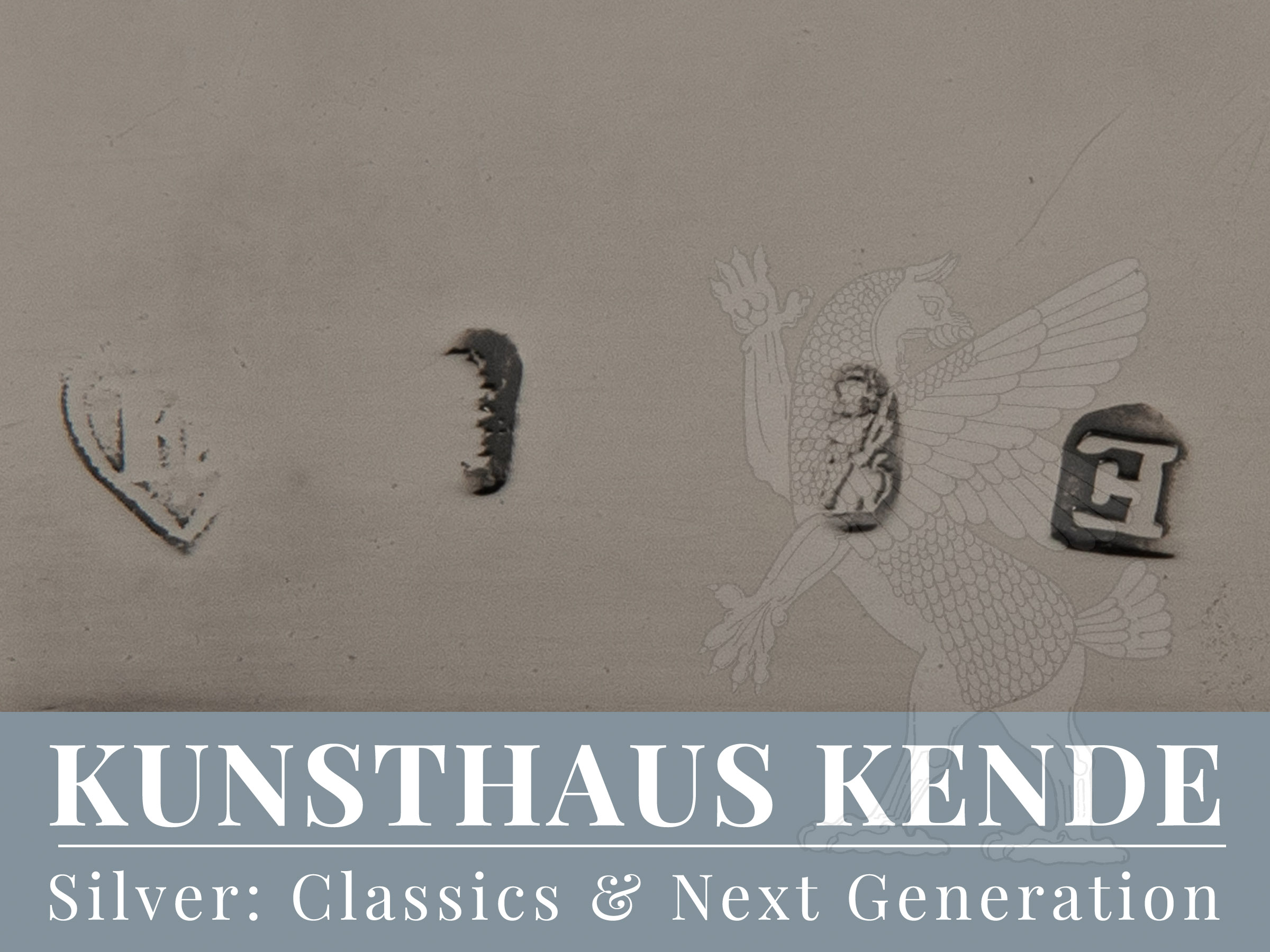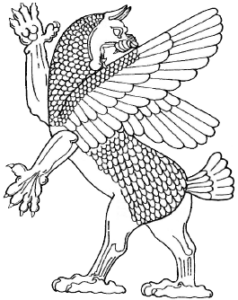Item number: 60194
A fine pair of George I Britannia silver tea caddies,
London 1720 by John Farnell
The smooth, octagonal body merging into the correspondingly smooth shoulder. The analogue lid finished with a twisted baluster. The base, which can be pulled out for filling, is only marked with a maker’s mark, the lid is unmarked. The body is hallmarked on the underside of the back. The contemporary coat of arms engravinged on the front commemorates the marriage of a gentleman of the Dove family (who were based in East Burgholt in the county of Suffolk) and a lady of the Pierse family (whose family was based in Alston in the county of Warwickshire).
An attractively preserved, early Britannia silver pair of tea caddies with beautifully preserved, original surface. An interesting detail is the twisted baluster of the lid, which not only had a decorative function, but was also used as a handle when the lid was used as a measuring cup when preparing tea.
8.2 cm / 3.22″ length, 5.4 cm / 2.12 width (base), 12.5 cm / 4.92″ total height; 240.3 g / 7.72 oz and 237.4 g / 7.63 oz
A comparable silver tea caddy by John Farnell can be found in the collections of the Victoria & Albert Museum, London (please see here).
A depiction painted only slightly later, around 1727, which is attributed to the artist Richard Collins and is in the possession of the Victoria & Albert Museum as well, vividly documents how tea was drunk at that time (see here). The silver and porcelain of the aristocratic family depicted here, which is shown with great pride, is in the latest taste of the time and shows a strongly resembling, but here hexagonally shaped tea caddy next to a sugar bowl with a removable lid (comparable to this work), sugar tongs, a tray for teaspoons, a teapot on a burner stand as well as a hot water pot and a bowl.
Tea caddies were often made in pairs at this time to store black tea (bohea) and green tea separately. In some cases, there was also a third lidded box for sugar.
John Farnell, the maker of these tea canisters, was apprenticed in London in 1706 and entered his mark as an ‘at large’ worker in 1714.
